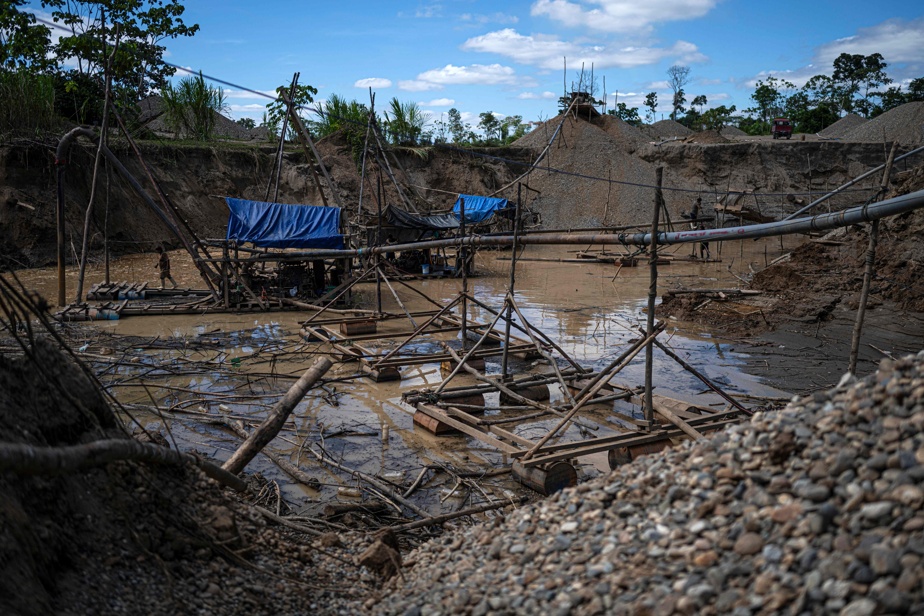On the banks of the Madre de Dios River, dredges suck up sediment day and night in search of gold. Illegal logging is devouring the Amazon forest in Peru, a major world producer of the precious metal.
The Madre de Dios region, in the southeast of the country, on the border with Brazil and Bolivia, has lost an average of 21,000 hectares of forest per year since 2017, or twice the area of Paris.
Where there was vegetation, vast quarries now open up flooded with ocher water where dredges are at work continuously.
“Community members can no longer plant corn, bananas or yucca, because this land is practically dead,” laments Jaime Vargas, a 47-year-old indigenous leader, promoter of reforestation of abandoned mining sites.
Although the activity is prohibited on their lands, the indigenous people are the first to suffer from illegal mining activities, even if some take part in it.
“It is the State which is responsible, because of its disorder” in the management of mining, denounces the indigenous leader of the Shipibo people to AFP.
Three types of gold mining coexist in Peru: the legal one, the informal one which tries to complete the tortuous process of legalization, and the illegal one, whose activity finances organized crime.
“Illegal miners are invading us from all sides,” complains Lucio Quispe, 40, more with resignation than anger. He and his family operate a 200-hectare concession located about a two-hour drive from the regional capital Puerto Maldonado.
His two brothers were recently attacked with machetes, in a region where clashes around mining sites are commonplace.
In 2022, Peru officially produced 96 tons of gold, but around 180 were exported, mainly to Canada, India, Switzerland and the United States, according to official data.
“45% of exports do not have a production register,” underlines the organization which supervises the banking sector and collaborates in the fight against money laundering.
Independent studies place the country as the top illegal gold exporter in South America, with 44 percent, ahead of Colombia (25 percent) and Bolivia (12 percent), according to the Peruvian Institute of Economics, a center reflection.
This is because the price of gold has skyrocketed over the past four years, reaching a record high in May. Peru is the tenth largest gold producer in the world and the second largest in Latin America, according to the USGC Institute of Geophysics.
In 2010, a 5,000 km2 mining corridor was demarcated, in particular to protect reserves and national parks in the region. Intended for legal mining, informal activity is exceptionally authorized until the end of the year. Since 2016, when the legalization process began, the authorities have pushed back the deadline several times.
Of the 9,000 registered in 2019 – when the registration period expired – only 200 have so far obtained a license, according to Augusto Villegas, regional director of energy and mining.
In the corridor, alluvial gold is exploited. In 100 cubic meters of earth, approximately 10 to 15 grams of gold are extracted, the value of which per gram can reach 63 dollars.
“But we can’t make omelettes without breaking eggs, we can’t mine in Madre de Dios without sacrificing the forest,” he admits.
Furthermore, many miners continue to use mercury to separate gold from sediments, although the country signed an international agreement aimed at gradually eliminating it and since 2015 has banned its import.
Faced with the subsequent explosion in prices of the toxic substance, some mining operators turned to “ecological gold”.
Lucila Huanco, 54, has not used mercury for three years in her 3,000-hectare concession. She replaced it with the gravity separation technique.
If initially she encountered difficulties selling her production, which is different from that extracted with mercury, she claims to now have a client in Lima who pays her 70 dollars per gram of gold.
“Honestly, I don’t want to be singled out as polluters anymore,” she proclaims.




